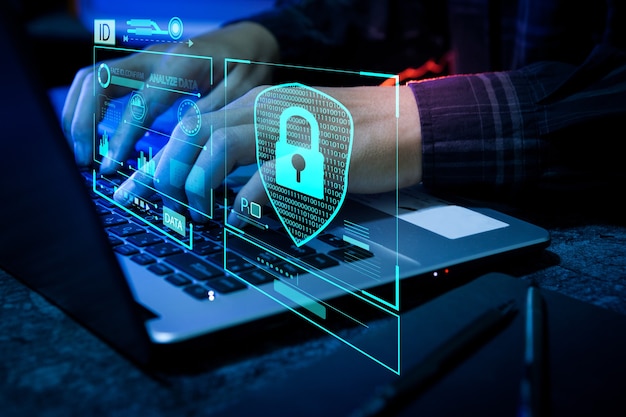Why Preventing Cyberattacks is Better Than Recovery Measures
by Sumona Business Security Systems 11 April 2022

Data loss emanating from successful cyberattacks has devastating short-term to long-term business operation ramifications.
Digital businesses rely on big data to guide daily business decisions through BI analytical insights. The information businesses gather ranges from seemingly insignificant insights related to user preferences and extend to sensitive banking and personal details.
In a world like this, cybersecurity experts are working on both advanced preventative measures and data recovery technologies. I.T departments and tech executives face an important decision to make, choosing to prioritize preventative measures or expand recovery options.
To allocate cybersecurity budgeting specifics accordingly here is why preventative measures trump data recovery.
7 Prime Reasons For Which Preventing Cyberattacks is Better Than Recovery Measures
1. Characteristics of preventative cybersecurity

Preventative cybersecurity measures can be categorized as proactive security hygiene principles based on progressive tech tools to fend off current and future attacks. All preventative security tools scan their respective potential breach points for malware or suspicious user behavior.
From then, real-time alerts can be issued to network and system administrators of that suspicious behavior or malware. The threat is contained before it even penetrates the system, and administrators can decide on actions to take.
An email security solution that scans malware on incoming mail and flags any suspicious social engineering tactics is an excellent example of preventative cybersecurity tools.
Most preventative security tools utilize Artificial Intelligence/Machine Learning (AI/ML) to detect the latest threats and contain them accordingly. At the same time, a good preventative security strategy also heavily relies on the workforce’s attitude towards cybersecurity.
2. Advantage of preventing threats vs. recovery
When compared with data recovery, preventative measures are highly more efficient. One of the reasons that give preventing threats the advantage in this regard is cost savings. There are more costs attributed to data recovery than the investment made toward preventing threats.
When data recovery is required, this means a cyberattack has already been successful. Although the data can be recovered and used for business operations, there are forensic reports that need to be compiled.
Additionally, there are other remediation costs accompanying data recovery efforts. At the same time, prevention preserves a good company reputation that is lost after a successful cyberattack. While recovering data will help with business operations going forward, the time, financial resources, and trust lost due to a lack of prevention measures can’t be easily regained.
3. Preventative cybersecurity tools

Preventative cybersecurity has many advanced tools that can be implemented to prevent the most recent attack strategies. These tools range from email security solutions all the way to network threat detection.
All preventative cybersecurity tools use advanced deep scanning technology. For example, email security tools use AI/ML to detect potential social engineering attacks. As a result, employees are notified if an email might be potentially carrying malware or DDoS attacks.
Using a tool of this kind can protect the interests of companies on a mission of adding more customers to their product or service. Additionally, preventive cybersecurity tools also conduct routine malware scans in conjunction with advanced threat detection strategies.
4. Adopting a progressive security culture
Part of a successful preventative security strategy involves all stakeholders, including all employees. Every employee and executive should adopt a progressive security culture of being in the loop about the latest security threats. This involves knowing more about social engineering tactics used by cybercriminals to infiltrate company networks and systems.
Instead of having a complacent mindset on cybersecurity, the entire workforce should actively look for methods to improve security hygiene principles within the organization. As a CTO or IT head within your organization, you have the responsibility of initiating this culture by offering training on cybersecurity.
Introducing the tools for all employees to know can also help the workforce to work alongside these solutions, and that contributes to a progressive cybersecurity culture.
5. Periodical security strategies inventory

As time progresses, so do cyber threats facing organizations of varying sizes. The progression of cyber threats such as social engineering and malware mules requires advanced tech tools and policies. Periodically conducting a readiness assessment has major benefits for all companies.
The security strategies inventory benchmarks tech tools and policies currently in effect within the organization against the most prevalent cyberattacks. Through this clinical assessment, CTOs, and IT departments can ascertain where improvement is due.
These key players can then formulate action points and follow them through with practical steps to make the needed improvements. Legacy security systems might have to be replaced with modern AI/ML tools with comprehensive coverage. The periodical security strategies inventory can be conducted at your discretion, but the timeframe should not be too far apart.
6. Data recovery infrastructure weaknesses
The core weakness of data recovery is that its efficacy is very limited compared to proactive preventative measures, whether stored on-site or in the cloud. At the same time, data recovery indirectly promotes a detrimental complacent attitude toward cybersecurity.
When much effort is invested toward recovery efforts only, other preventative measures such as advanced threat detection might be disregarded. At the same time, depending on data recovery policies, the most recent operational information could be lost in a successful cyberattack.
If data recovery policies backup insights on certain appointed times only, some critical information might be inaccessible in successful ransomware attacks. Therefore, prioritizing data recovery over preventative measures might not be the best decision in the long run.
7. Choosing between prevention and recovery?

This boils down to one simple question, should you implement preventative measures or data recovery systems? The answer is that you should implement both cybersecurity strategies. However, preventative measures must be prioritized over data recovery to proactively fend off any potential attacks.
Preventative cybersecurity is the first line of defense from cyberattack threats. Data recovery should be the last line of defense to protect the organization’s interest if all else fails.
It is important to note that data recovery must not be used solo, but it’s a supplementary cybersecurity strategy. The bottom line is that CTOs and IT departments must always remember that prevention is better than cure when implementing security strategies.
Read Also:







































































































